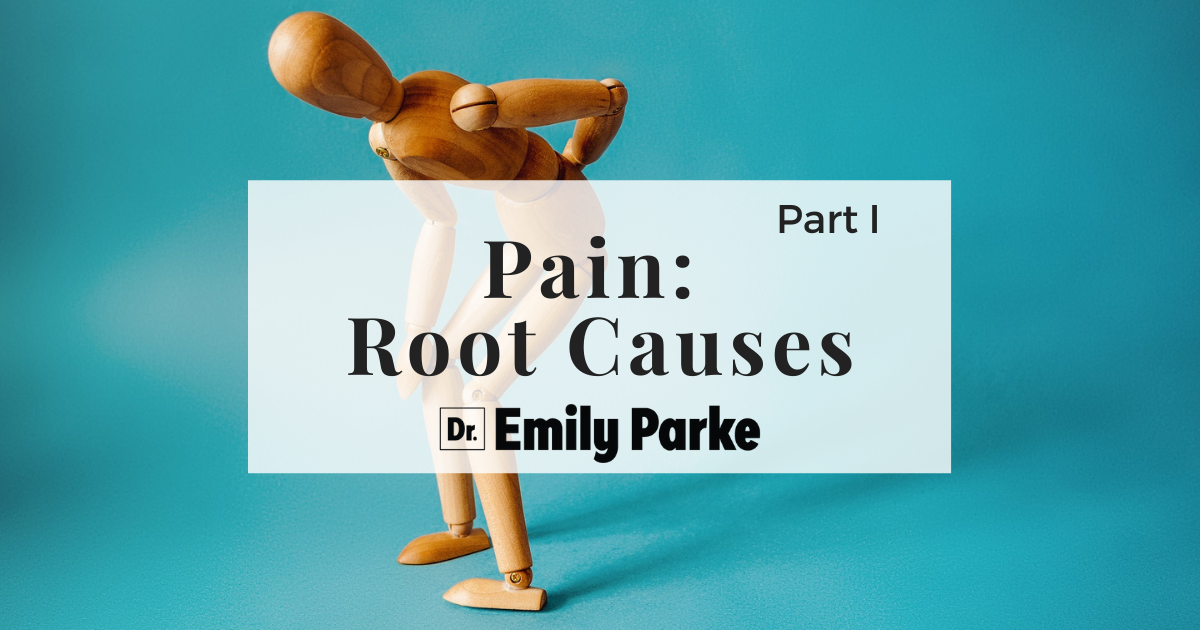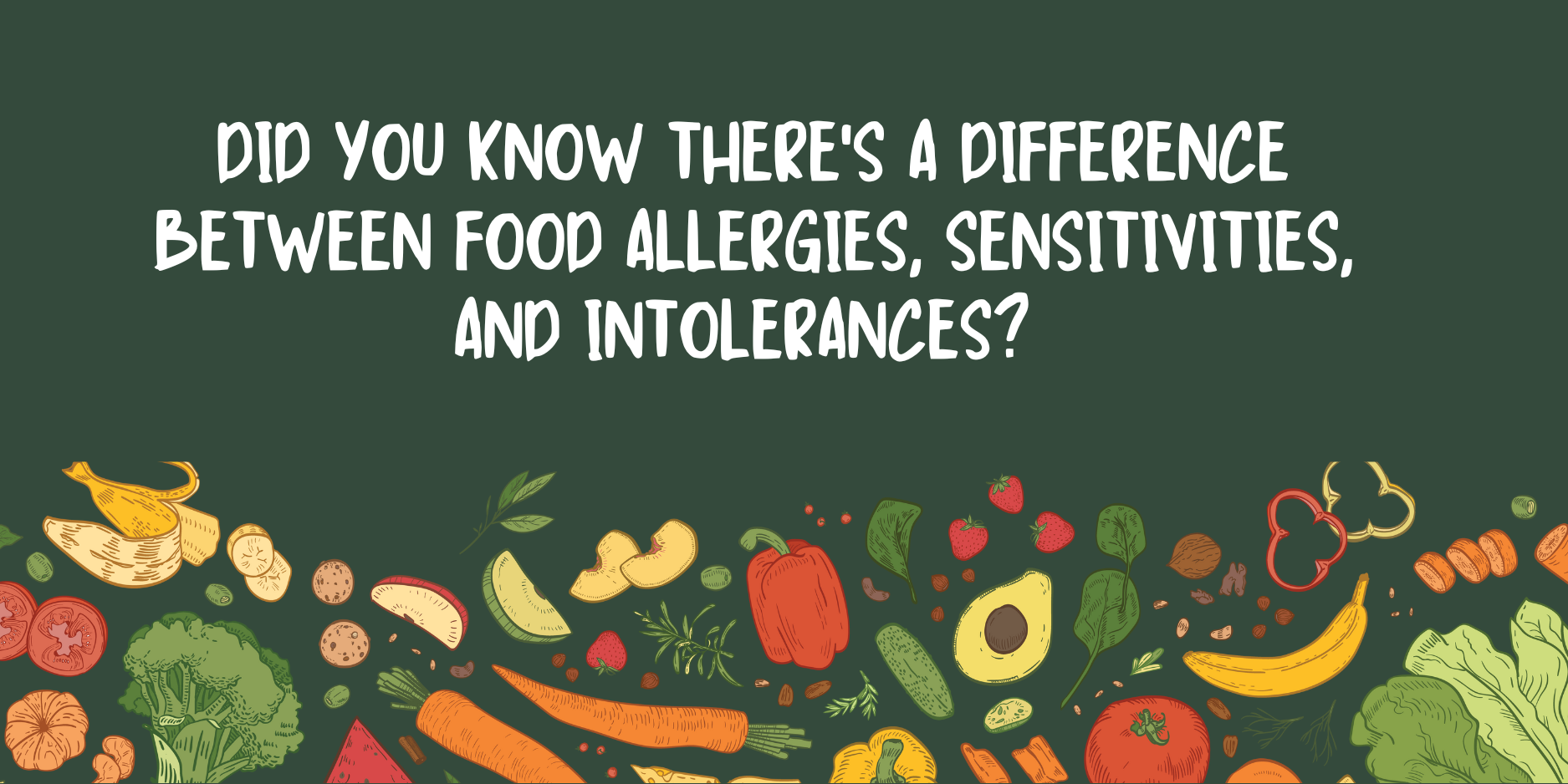

Hi, this is Dr. Emily Parke. In today’s Functional Health Minute, I’d like to talk a little bit about root causes of more chronic types of pain. Of course if you have an acute pain, like you’ve had an injury or a surgery, you completely understand why you’re having the pain. But much beyond that, that would be considered chronic pain. If it’s going on for several weeks, you want to start to think about why it might be happening. Some of the reasons I’m going to go over might surprise you a little bit. First and foremost we’re going to talk about the physical types of pain because they are really important. If you’ve got a tight muscle, if you’ve got degeneration happening in a joint, if you’ve got issues with the ligaments or tendons, of course those are reasons for pain.
But other things that you might not think about are related to if there’s a compressed nerve, if there’s swelling going on which can be secondary to poor venous flow, lymphatic flow or just poor blood flow in general, those are other reasons that can contribute to pain. Of course inflammation of any kind is going to create some degree of swelling and can create pain as well. So those are the physical reasons. Then there are other things like your food for example. Yes, food can cause inflammation and can therefore cause pain. There are different mechanisms for why this might happen though. One of the first things I like to have people do is go on, of course, a more anti-inflammatory type diet and I’ve got tons of video content and written content on my website about what that might look like for you.
So food can cause inflammation and not just from processed, packaged, sugary items, the industrial seed oils, all of those of course are inflammatory and can create pain. But someone may also have food sensitivities, food allergies or food intolerances and they are three different things and they can all contribute to pain. For example, the common areas for food, a lot of people have issues with gluten, dairy, soy, the legume family, the nightshade family, and other grains. There’s all kinds of foods that are common triggers but honestly it can be just about any food. All of our bodies are different and all of our immune systems are different and respond in different ways. So we can have a trigger for pain in just about any food. But those ones I listed are the most common.
Then of course, separate from food but kind of related are nutrient deficiencies. If you’ve got a low vitamin D for example, a deficient B12 or folate, a magnesium deficiency, these are common nutrients that can contribute to pain and once they’re corrected, pain can improve of course. Then besides nutrient deficiencies, you can have some toxic exposures. If you’ve got metals, heavy metals exposure, or if you had environmental toxins that you’re exposed to or mold, those are reasons that can create pain as well.
And then of course, if you have a chronic infection that you’re unaware of, that can also contribute to pain because anytime there’s a chronic infection going on, if it’s left unchecked, there can become some tissue destruction. So this is where you can start to get some issues in, for example the joints and other areas of the body. Lyme disease is a great example of that one. And then there’s another category that encompasses some of the things I’m talking about but I do want to mention it a little bit separately and that’s just autoimmune disease in general. All the things I just mentioned like nutrient deficiencies, toxins, chronic infections and there’s other things like stress and poor sleep, those things can all be triggers for autoimmune disease.
But once the autoimmune disease is turned on, then there’s a separate process happening. Your own body’s immune system is now attacking certain parts of the body. For example, in Hashimoto’s the antibodies are attacking the thyroid. In rheumatoid arthritis the antibodies are attacking the joints and in lupus the antibodies may be attacking other organs like your kidneys or your liver or your lungs or the lining of your heart for example. It just depends on what autoimmune disease you have of course. If you’ve got celiac disease, it’s the lining of the small intestine and so on and so forth. Once you have an autoimmune disease, you want to try to figure out what are the triggers, what are the root causes and work on those as far as getting your pain under better control.
In this first video, I just wanted to describe different ways to think about what things might be causing pain for you. In the next video series I’ll go over a little bit more of what to do about it. This is Dr. Emily Parke with today’s Functional Health Minute.
Watch Part III here.
Share:
Dr. Emily Parke
Social Media
Most Popular Posts
Subscribe To Our Newsletter
Related Posts

New Podcast Episode: My journey into functional medicine + what I’ve learned
I’m excited to share that I recently joined DeLo for Episode 165 of the On the DeLo podcast! In this conversation, we explored my journey

Understanding the Essential Labs for Women on Hormone Replacement Therapy (HRT)
So what are the minimum labs we’re looking at when we do hormone replacement therapy? We obviously want to look at an estrogen level, so

How to figure out the right amount of HRT in women
What about checking lab values when you’re on hormone replacement therapy? I do find it to be helpful, but we also want to consider symptoms.

Did you know there’s a difference between food allergies, sensitivities, and intolerances?
Did you know that there’s a difference between food allergies, food sensitivities and food intolerances? Food allergies, the reactions tend to happen pretty immediately and
